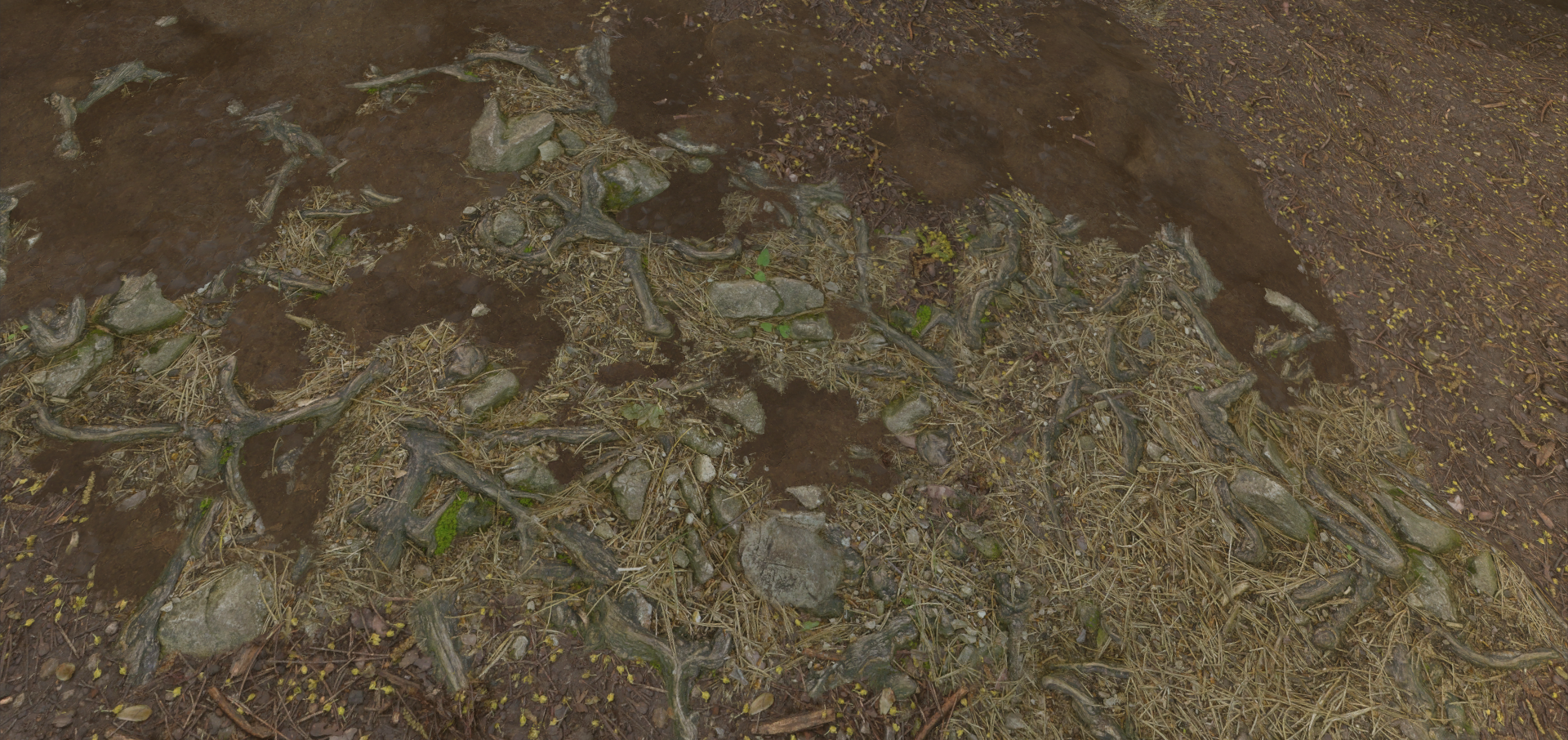 This special node allows for the full blending of the Biome subgraphs inside a World graph. For that reason, it can only be used inside a World Graph. It will blend the Height Output, Vegetation Outputs and Texture Outputs automatically.
This special node allows for the full blending of the Biome subgraphs inside a World graph. For that reason, it can only be used inside a World Graph. It will blend the Height Output, Vegetation Outputs and Texture Outputs automatically.
To use it it is first needed to create a Biome and set it up accordingly. After that you can add the Biome Output Node and assign a Density Layer. The density layer must be a normalized height map that defines with 1 where you want this biome and 0 where you don’t want this biome.
With the biome output and the density layer generated, add the Biome Combiner and input all the biomes. The result will be blended following the Operation selected:
- Add: Multiplies the Input Height Map by the Density Layer and adds it all together.
- Max Weight: Applies height map blending using the density layer as input. This will act as a Max Blend with a blend factor defined by Weight Blending. This means that the biome shown will be the one with the maximum value inside Density Layer blended between the Weight Blending.
- Max Height: Similar to Max Weight, but instead of using only the Density Layer, it will premultiply and normalize with the height to make more dramatic changes. This means that the blending value will take into account the difference of height.

Mountain Biome

Canyons Biome

Combine Add

Combine Max Weight

Combine Max Height
I get biomes where I don’t want?
Altough the Combine Bomes has a [Remap/Normalize] node built-in inside, it is recommended to implement your own normalization. Verifying that each density layer used is well-defined can improve the output results. Although it supports any kind of input maps, controlled and complimentary input maps for all the inputs will provide better results.
